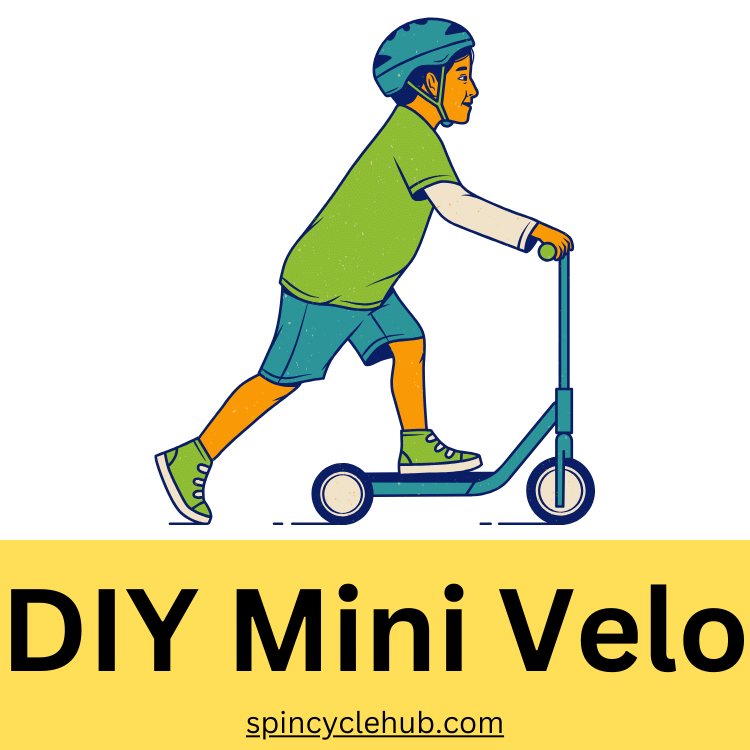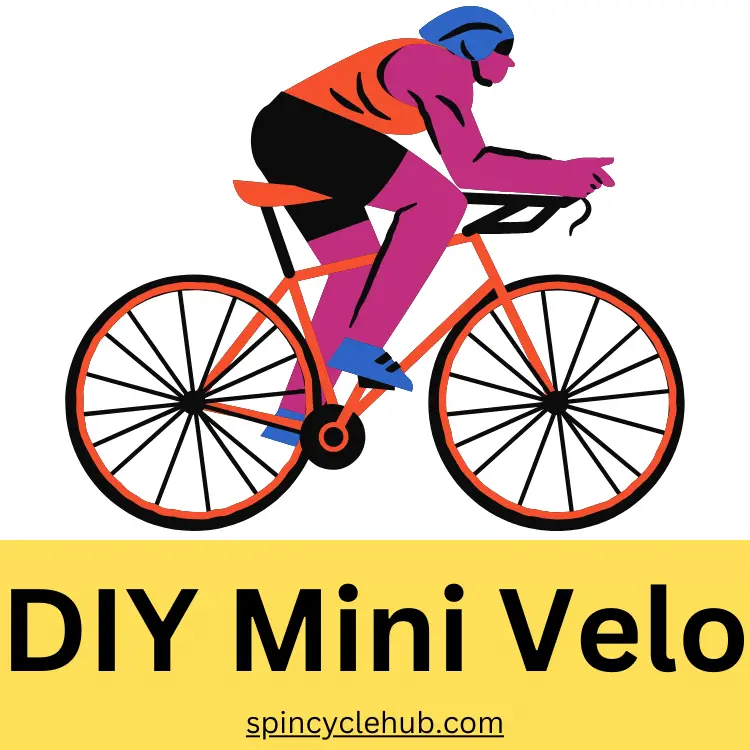Introduction
So, you’re itching to hit the streets on two wheels but don’t quite fancy the idea of lugging around a bulky bike? Enter the DIY mini velo – your compact, stylish, and downright fun solution to urban commuting and leisure riding. In this guide, we’ll take you through the ins and outs of building your very own mini velo, from choosing the right components to cruising in style through city streets.

Why Mini Velo?
Let’s kick things off by addressing the big question – why choose a mini velo over a traditional bike? Well, picture this: you’re zipping through crowded streets, effortlessly weaving in and out of traffic, all while turning heads with your sleek and compact ride. Mini velos offer all the functionality of a standard bike but with added agility and style points to boot.
The Joy of DIY
Now, before we dive into the nitty-gritty of building your mini velo, let’s take a moment to appreciate the beauty of the DIY approach. There’s something uniquely satisfying about rolling up your sleeves, getting your hands dirty, and crafting a ride that’s truly one-of-a-kind. Plus, the sense of accomplishment when you finally hit the road on a bike you built yourself? Priceless.
Planning Your Build
Before you start raiding the bike shop for parts, it’s essential to have a solid plan in place. Think about how and where you’ll be riding your mini velo, as this will influence your component choices. Are you a city slicker looking for a nimble commuter, or a weekend warrior craving off-road adventures? Tailor your build to suit your needs and preferences.
Choosing the Right Components
Now that you’ve got a game plan, it’s time to start assembling your dream ride. Here’s a breakdown of the key components you’ll need:
Frame
The foundation of any bike build, the frame sets the tone for your ride. When it comes to mini velos, look for a frame that strikes the perfect balance between compactness and comfort. Aluminum and steel frames are popular choices for their durability and versatility.
Wheels and Tires
Since mini velos are all about agility and maneuverability, opt for smaller wheels and slightly wider tires for improved stability and shock absorption. Consider factors like tire tread and puncture resistance depending on your riding terrain.
Drivetrain
Whether you prefer the simplicity of a single-speed setup or the versatility of multiple gears, the drivetrain is where the magic happens. Choose a gear ratio that suits your riding style, keeping in mind factors like terrain and desired speed.
Brakes
Safety first, folks! Invest in a reliable set of brakes to keep you in control on the road. From traditional rim brakes to modern disc brakes, there’s no shortage of options to suit your stopping needs.
Building Your Mini Velo
With your components in hand, it’s time to bring your mini velo to life. If you’re new to bike building, don’t sweat it – there are plenty of resources available online to guide you through the process step by step. Just remember to take your time, double-check your work, and don’t be afraid to ask for help if you need it.
Assembly Tips and Tricks
Assembling a bike can be a bit like solving a puzzle, but fear not – with a little patience and perseverance, you’ll have your mini velo up and running in no time. Here are some handy tips to help you along the way:
- Take Inventory: Before you start assembling, double-check that you have all the necessary parts and tools on hand.
- Follow Instructions: While it may be tempting to go rogue, following the manufacturer’s assembly instructions will save you a world of headaches down the line.
- Tighten with Care: When tightening bolts and screws, use a torque wrench to ensure everything is snug but not over-tightened – nobody wants stripped threads!
Customizing Your Ride
One of the best parts of building your own mini velo is the opportunity to add your personal flair. Whether it’s a flashy paint job, custom decals, or upgraded components, the sky’s the limit when it comes to customization. Let your creativity run wild and make your mini velo truly your own.
Accessories and Add-Ons
Enhance your riding experience with a range of accessories and add-ons designed to maximize comfort, convenience, and style. From racks and fenders to lights and bells, there’s no shortage of gadgets to trick out your ride.
Maintenance Matters
Once your mini velo is built and customized to perfection, don’t forget to show it some love with regular maintenance. Keep your bike clean, lubricated, and properly tuned to ensure smooth sailing on every ride.

Conclusion
And there you have it – your comprehensive guide to building and riding your very own DIY mini velo. Whether you’re a seasoned cyclist or a complete newbie, building a mini velo is a rewarding experience that’s sure to bring joy and excitement to your two-wheeled adventures. So, what are you waiting for? Grab your tools, saddle up, and hit the road in style!
FAQs (Frequently Asked Questions)
Q1. Can I use any type of frame for a mini velo build?
While you can technically use any frame, it’s best to choose one specifically designed for mini velos to ensure the proper balance of compactness and comfort.
Q2. How long does it take to build a DIY mini velo?
The time it takes to build a mini velo can vary depending on your experience level and the complexity of your build. Plan for a weekend project at the very least, but don’t rush – enjoy the process!
Q3. Are mini velos suitable for long-distance rides?
While mini velos excel in urban environments and short to medium-distance rides, they may not be the most comfortable option for long journeys due to their compact size.
Q4. Can I upgrade my mini velo with new components later on?
Absolutely! One of the joys of DIY bike building is the ability to upgrade and customize your ride over time. Start with the basics and add on as your budget and preferences allow.
Q5. Are mini velos suitable for riders of all heights?
Most mini velos are designed to accommodate a range of rider heights, but it’s essential to choose a frame size that suits your body proportions for optimal comfort and performance.
- Sheldon Brown’s Bicycle Glossary: This comprehensive glossary provides definitions and explanations of various bike components and terminology, making it a valuable resource for readers who are new to DIY bike building.
- Park Tool Repair Help: Park Tool’s Repair Help section offers a wealth of articles, tutorials, and videos covering everything from basic maintenance to advanced repairs. It’s a great resource for readers looking to learn more about bike maintenance and upkeep.
Watch this one,
Video Credits – Cowboy Tomi
You May Also Like
- Univega Nuovo Sport Road Bike: A Ride Worth Taking
- Univega Gran Premio: Your Ticket to Cycling Bliss
- Trek Composite 2300: Your Ultimate Guide to Hitting the Trails
- Riding Down Memory Lane: Exploring the 1972 Schwinn Varsity




